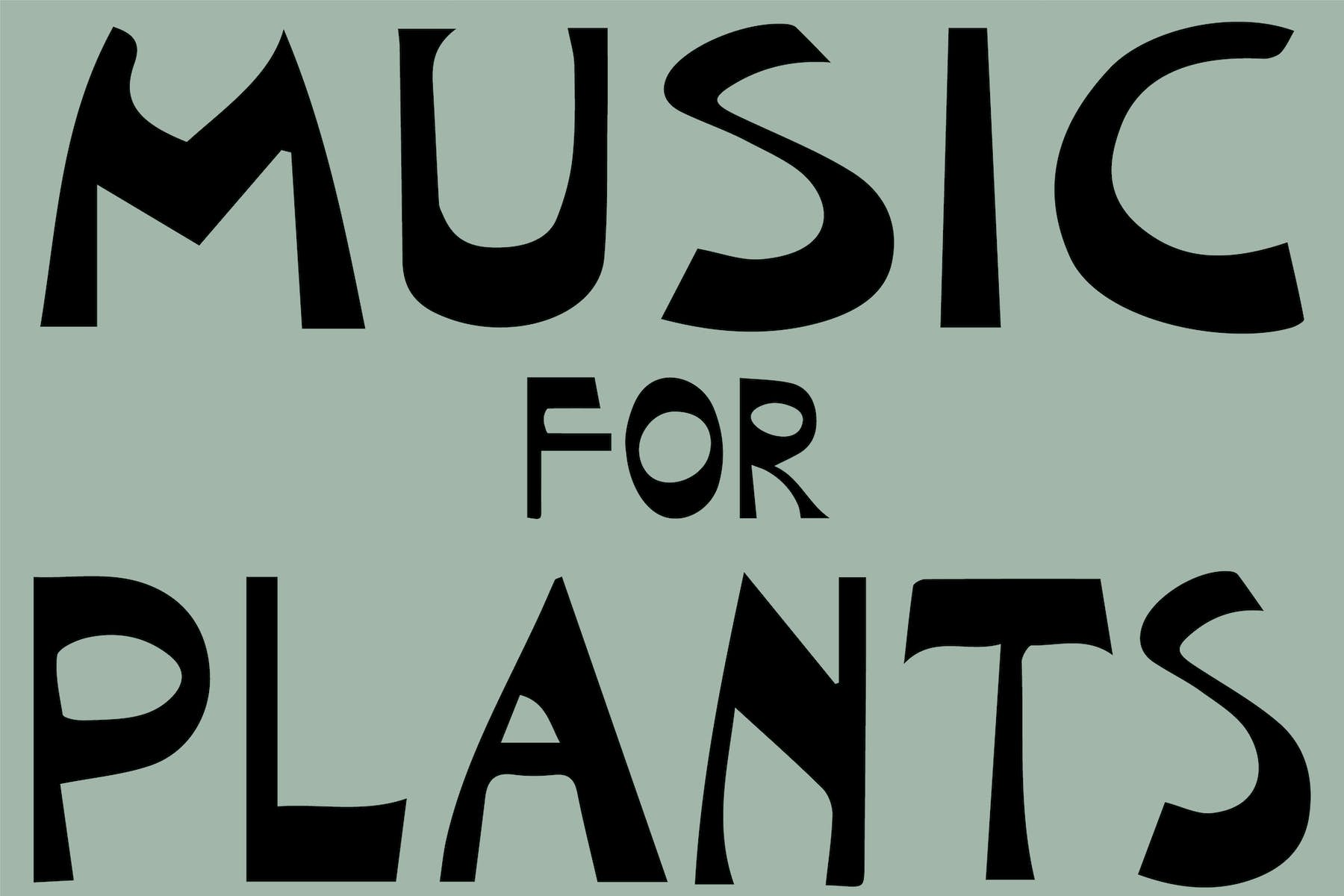The human need for self-expression is innate. We’re not just talking about our general
tendencies to fulfill our hierarchy of needs to survive and socialize but to also express ourselves
in a creative way. This is not only evidenced in ancient cave paintings that reflect a level of
self-awareness but also in a Neaderthal flute that dates back 60,000 years ago proving that our
ancestors enjoyed jamming so much they actually made instruments to entertain each other. But
why?
Our imagination is more in favor of the thought of two cavemen sitting around a campfire beating
two rocks together in a syncopated rhythm purely for enjoyment.You see, the science
community believes our brains are hard-wired to translate music as a reward so simply
speaking, we’ve evolved to like it. Would you believe us if we told you that the same can be said
for plants?
While the science is a little more fuzzy around the feedback we get from plants—they can’t
exactly hum along or tap their feet—a number of musicians have put them at the center of their
production. Yep, that actually means artists like Stevie Wonder, Hiroshi Yoshimura, Roger Roger,
Peter Tosh and Mort Garson actually orchestrated music with plants as their intended audience.
This is where things get a little trippy.

Much like us, plants are indeed audiophiles, that is, they actually prefer certain sounds. Dominic
Hes from the University of Melbourne dug deeper into the particulars after recognizing research
that plants have adapted to listen for water. Naturally, this means that they’re more in tune with
vibrations in the range of 115Hz and 250Hz that occur in different landscapes. In their waking
hours, their tolerance is limited to one to three hours and like us, they prefer more chilled out
tonality often heard in jazz or classical tunes. While us humans might tear up when we hear a
song that reminds us of a lost lover or another emotional moment, some plants under the
influence of music have been observed with longer dilated stomata—their lungs—which means
they breathe deeper and grow faster when under the influence.
It’s easy to imagine a sapling taking a deep breath in utter bliss to the sounds of the early
Japanese ambient pioneer, Hiroshi Yoshimura. Often regarded as the visionary in his genre and
master of the appropriately named kankyō ongaku, or environment music, his compositions live
somewhere between the forest floor and the oxygen bubble above stretching all the way to tops
of the tree canopy.Yoshimura’s soothing tracks not only utilize a variety of electronic
instrumentation but he also sampled a variety of field recordings like chirping birds, soothing
streams and other organic elements to create dreamy soundscapes for both plants and humans
to vibe together.

On a similar wavelength, Mort Garson, better known to many as the creator of Plantasia is
officially credited as the first composer to make an album just for plants. The Canadian session
musician was behind a lot of the instrumentation on popular albums by Doris Day and Bill
Withers but a chance meeting with Bob Moog, the celebrated inventor of the Moog synthesizer
evolved his practice beyond that. Garson and the Moog were a match made in heaven most
likely due to the limitless exploration that new electronic music afforded.
With that, Garson scored some pretty psychedelic sounding work including a nerdy partnership
between his music and Mother Earth, a well-known nursery in the 1970s located in Los Angeles.
Relatively high-concept at the time, Plantasia was a gift with purchase for anyone with a green
thumb. It arrived at a time when the DIY gardening movement was met with the popularization of
best-selling books like The Secret Life of Plants by Peter Tompkins and Christopher Bird. Both
peeled back the curtain to inspire people to ask questions about our connection to the natural
world. In support of the project, Mother Earth purveyors Lynn and Joel Rapp most likely
embellished a story about a certain unknown “professor” who did audio experiments on three
plants. The one that heard the news died while the other two that listened to rock and classical
music thrived. True or not, the anecdote is fairly consistent with the “science” we know today and
thanks to Sacred Bones records, Plantasia is enjoying a second life for both anthophiles and
audiophiles alike.

Musicians have a way of glomming onto evolving trends and plant music is no exception.
Tompkins and Bird tapped Stevie Wonder to score the documentary film version of The Secret
Life of Plants. What’s interesting is that with Wonder’s lack of sight, he created a soundtrack
from a different sensory perception as each scene was described by the film’s producer in great
detail. In fact, a stand-out track ‘Same Old Story’ was Wonder’s lyrical translation of Jagadish
Chandra Bose’s work with plants. The Indian scientific multi-hyphenate invented the
crescograph that he used to measure the effects of stimuli on plant growth. Wonder sang, “For
most felt it was mad to conceive that plants thought, felt, and moved quite like we” bringing
Bose’s idea to the masses through a gentle and relatable song Wonder paired with the piano.
Relatedly, a long list of artists ranging from Joni Mitchell and David Bowie to The Beatles and
Genesis have given plants center stage seeing nature as the great equalizer with most if not all
the lyrics in plant-centric songs referencing them as mythical creatures or sentient beings to be
revered and conserved. Lucky for us, history repeats itself with each new movement
experiencing a little more enlightenment, introspection and appreciation for the era before.

Algorithms and streaming technologies have given albums like Plantasia a second life with press
mentions that abound for synthesizer and plant nerds alike. In fact, the tools are available for
anyone wanting to do a deep dive on the historical foundation of this audio phenomenon with a ton of link rich Wikipedia entries and digitized source material. Wellness and plant medicine are
also enjoying a resurgence so naturally a meditative soundtrack mirroring the placidiy of both
human and plant vibrations is expected. With over a million plays on some YouTube videos,
Brainwave Music from Australia is a great example of that making ambient music in the spirit of
Garson aimed at plants and transcendental individuals.
Other anthophiles are revisiting the hypothesis that the Rapps and others lobbed to their
audience that plants respond to external stimuli; in fact, new tools like Data Garden’s PlantWave
evolve the conversation and assert that they can actually make music. More on that later but this
resurgence brings into focus the inconvenient truth that plants are passive victims in our climate
crisis and necessary for survival. Perhaps revisiting an interesting time in music history will
assert our anthropomorphic tendencies to make conservation a more engaging and albeit
entertaining way to experience our interdependent relationship with nature. If anything, it gives
us additional reason to grow together and in turn celebrate this secret life of plants.







